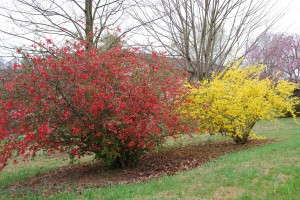Why would anyone prune spring flowering shrubs in the autumn season? After a long cold winter, why miss out on the delightful fragrance of lilac and viburnum flowers the following spring?
Predicting how cold, warm, or dry the coming winter season is rarely possible. Pruning cuts are wounds and weather extremes may cause injury to the previously-cut branches.
Partial list of spring flowering shrubs:
Azaleas (Rhododendron)
Beautybush (Kolkwitzia)
Deutzias
Fothergilla
Forsythias
Honeysuckles (Lonicera)
Magnolias (most deciduous types)
Mahonias
Mockorange
Flowering quince (Chaenomeles)
Spireas (Spiraea)
Lilacs (Syringa)
Viburnums
Weigela
These shrubs form their flower buds in the summer. Pruning them in the fall removes some, if not, all flower buds. Tall unruly shrubs can be partially pruned back if they spoil the appearance of your home and grounds. Expect some loss of spring blooms. You can complete the task in late spring.
Remove dead and dying branches at any time. Channel all the plant’s energy to the strongest buds and prune out weak wood. Thin out crowded and crossing branches to open up the interior of the shrub to better sunlight penetration and air circulation. This also reduces fungal diseases such as powdery mildew common to lilacs and other shrubs. Some heavy scale and adelgid infestations can be pruned off.
If a shrub is in poor health, you may want to attempt “renewal pruning”. You may opt to cut back most of shrub, leaving a few strong water sprouts around the old shrub base. Root suckers below ground can also rejuvenate an old shrub.


 Posted in
Posted in 
